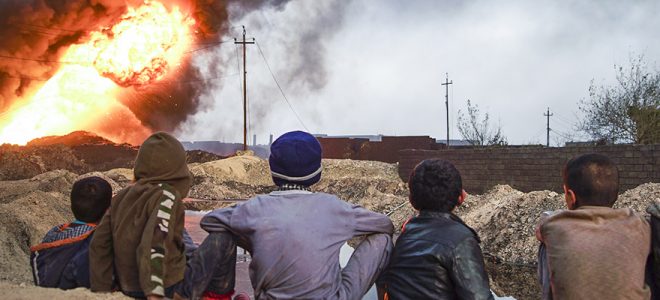

Steven Feldstein is an Associate Professor and holder of the Frank and Bethine Church Chair of Public Affairs at Boise State University. He is also a nonresident fellow at the Carnegie Endowment for International Peace’s Democracy and Rule of Law Program. His research focuses on U.S. foreign policy, counterterrorism, democracy and human rights.
In August, The Guardian broadcast a video narrating the journey from Raqqa to Europe of a 20-year old Syrian refugee named Rania. The story opens with Rania walking through the ruins of Kobane, Syria, amidst bombed out apartment buildings, gigantic roadside craters, and fallen electrical wire. She intones into the camera: “I always think about how this is a warzone for the rest of the world. But for us it is home. There is misery all over the place. I want to get a future.”
Under a pitch-black night sky, smugglers sneak Rania into Turkey. Several days later, she boards a perilously overcrowded inflatable rubber boat. It is designed for 15 people but goes to sea carrying over 50. The waves get stormier and the boat capsizes. Fortuitously, a nearby ship spots the drowning party and brings them to Greece. From there, Rania goes to the Macedonia border, intending to move north. She attempts several border crossings. Once, after fording a chilly river, she is beaten back by a line of border police wielding heavy batons. Another time, security guards shoot tear gas canisters into the crowd, leaving many bleeding and unconscious. Weeks later, Rania flies to Vienna via a fake passport. She is caught by the police and registers for asylum. That is where this chapter of Rania’s story ends.

Steven Feldstein will present on October 23 at the 34th annual Frank Church Conference on the campus of Boise State University. This year’s conference will focus on refugees and is themed “America’s Future: Refugees, Migration and National Security.” More information is available on the Frank Church Institute website.
Everything Rania has experienced – fleeing ISIS in Raqqa, moving among the rubble in Kobane, almost drowning in the Mediterranean Sea, dodging tear gas on the Macedonian border – is inherently preventable. This latest wave of displacement, which has brought staggering levels of disruption, is almost entirely manmade; the result of war and violence.
The statistics keep getting worse. At present, one in every 113 people in the world is now displaced, totaling 65.6 million people. Of this number, 22.5 million are officially categorized as refugees – meaning they have fled persecution and violence across international borders. 55% of the total displacement comes from three countries: Syria, Afghanistan, and South Sudan. Each of these countries is engaged in civil conflict and war. The most recent crisis to hit the headlines – with over 519,000 persons fleeing in the last month – is the Rohingya exodus from Myanmar. This situation is also manmade, stemming from actions taken by Myanmar’s military that the United Nations describes as a “textbook example of ethnic cleansing.”
If the majority of these crises are manmade, this means that their perpetuation is needless and unnecessary. Due to lack of political will, insufficient resources, and moral failure, the fighting continues and civilians keep fleeing and dying in record numbers.
The United States occupies a paradoxical role when it comes to this crisis. On the one hand, the U.S. is the most generous donor of humanitarian assistance in the world. It has contributed $1.8 billion in foreign aid in the past year to alleviate crises in South Sudan, Nigeria, Somalia, and Yemen. Since the start of the Syrian crisis, U.S. assistance has topped $3.8 billion.
On the other hand, U.S. military actions and partnerships are directly contributing to the very crises humanitarians are trying to resolve. U.S. policy choices bear responsibility in three ways: 1) U.S. military operations have caused immense disruption and are intensifying; 2) partner militaries are systematically violating international humanitarian law and exacerbating migration outflows; and 3) consequently, international norms to protect civilians during armed conflict are diminishing worldwide.
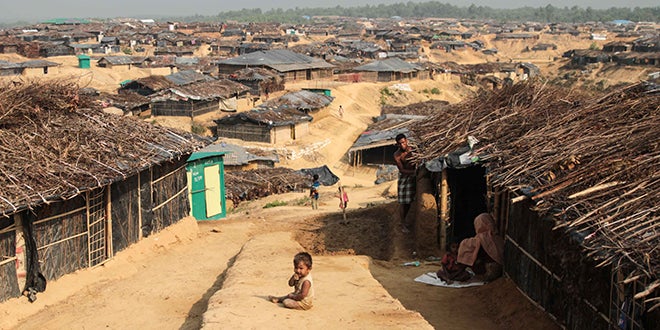
U.S. MILITARY OPERATIONS HAVE CAUSED IMMENSE DISRUPTION AND ARE INTENSIFYING
In the campaign to defeat ISIS, U.S. military operations have caused significant damage to communities and led to a steady rise in civilian deaths. Some of the outcomes have been positive. Massive U.S. firepower has shifted the tide against ISIS. Fighters are surrendering en masse as the inevitability of their defeat approaches. Coalition forces are finally liberating cities and towns that have been under ISIS’s yoke for multiple years. On the other hand, the incredible use of firepower and munitions has brought vast destruction. Millions of Iraqis are displaced and unable to return to their destroyed communities. Whole families have been wiped out from coalition airstrikes. Meanwhile in Syria, the war continues with devastating consequences: more than half the population has been displaced and 13.5 million people exhibit serious humanitarian needs (out of an estimated wartime population of 16.6 million).
Although airstrikes and bombings are a necessary part of the war effort, their effect has directly contributed to the failing humanitarian situation. Under President Donald J. Trump, this destruction has only increased. Although airstrikes and bombings are a necessary part of the war effort, their effect has directly contributed to the failing humanitarian situation. Under President Donald J. Trump, this destruction has only increased.
Even before Trump took office, human rights observers were concerned about the civilian impact from airstrikes. Under Obama’s watch, the fight against ISIS led to approximately 2,300 to 3,400 civilian deaths. The sheer amount of ordnance used was breathtaking. In 2016, for example, the United States dropped an estimated 26,172 bombs in seven countries: Syria, Iraq, Afghanistan, Libya, Yemen, Somalia and Pakistan.
But under President Trump’s leadership, civilian casualty rates have climbed exponentially higher. The non-profit monitoring group Airwars estimates that of the 102,000 bombs and missiles that the U.S. military has dropped in Iraq and Syria and the 5,500 civilians killed from airstrikes since the start of hostilities, 55% of this total has occurred in Trump’s first seven months. The huge increase in civilian deaths is not limited to the campaign against ISIS. In Afghanistan, for example, the United Nations reports a 67% increase in civilian deaths from U.S. airstrikes in the first six months of 2017 compared to the first half of 2016. In other words, civilian casualties are up everywhere under Trump’s leadership.
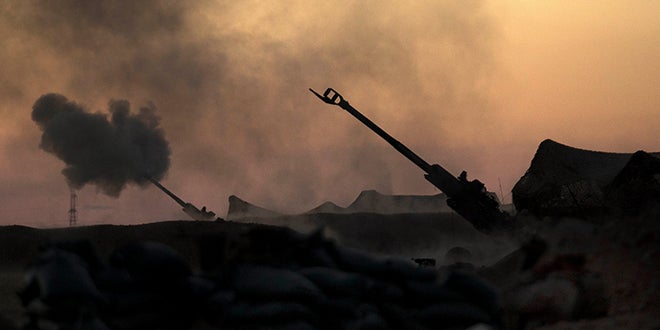
Experts offer several explanations for this trend.
One explanation holds that Trump’s full delegation of authority to the military has eased Obama-era restrictions and increased the threshold of risk that military commanders are willing to assume. A big criticism of Obama – including from former defense secretaries Robert Gates and Leon Panetta – was that the White House staff micro-managed and second-guessed the military. But under Trump, the converse appears to be the case. Jon Alterman from the Center for Strategic and International Studies cautions, “if you’re going to target and kill someone, there needs to be some kind of process to ensure that it serves a strategic purpose. We shouldn’t be comfortable with the other extreme, essentially handing out death sentences without much deliberation.”
It is possible that the intense focus on pinpointing and destroying ISIS has overshadowed the competing priority of protecting civilians. Because Trump is instituting rules changes to permanently scale back civilian oversight, and has also delegated down decision-making authority to call in lethal air strikes (reportedly colonels rather than one-star generals can now authorize bombings), this may explain why civilian casualties are on the rise.
A second line of reasoning emphasizes the changing nature of the counter-ISIS campaign. The Pentagon contends that the rise in casualties is “attributable to the change in location” of battlefield operations towards more densely populated urban environments like Mosul and Raqqa. But this is only a partial answer. What the Pentagon is loath to admit is that they are dropping larger bombs with substantially less accuracy into densely packed urban areas. A Human Rights Watch analysis of bomb craters in West Mosul estimates that U.S. coalition forces have routinely used much larger airdropped bombs – often weighing between 500 and 1,000 lbs. – than in prior operations. They note: “the use of explosive weapons with wide-area effects such as air-dropped bombs of this size on probable military targets in densely populated civilian areas of western Mosul may be resulting in civilian casualties…that is excessive to the anticipated military objectives of the strikes.” In other words, bigger bombs dropped more frequently in urban settings appear to be significant contributors to the uptick in casualties.
A third explanation is that aggressive rhetoric from the president is implicitly causing the military to take more risks and de-prioritize protecting civilians. Trump routinely makes inflammatory statements, including vowing on the campaign trail to “take out” terrorists’ families, a clear violation of Geneva Conventions. As Micah Zenko from the Council on Foreign Relations observes, “A change in the rules of engagement does not have to be a change in doctrine. It can just be a change in tone and command climate.” Words matter, especially coming from the commander-in-chief. In the face of such aggressive rhetoric, it should not come as a surprise that military officers feel encouraged – if not pressured – to take greater risks.
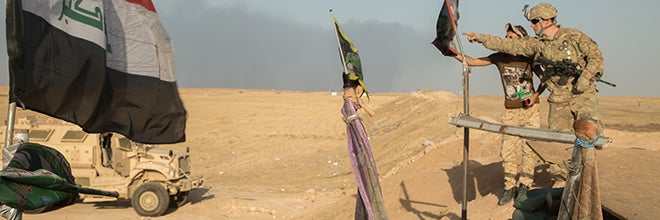
PARTNER MILITARIES ARE SYSTEMATICALLY VIOLATING INTERNATIONAL HUMANITARIAN LAW
In addition to the impacts of its own military operations, the United States supports partner militaries that have generated substantial civilian casualties and led to immense displacement. A tragic example is the Saudi coalition’s current campaign in Yemen. In 2014, Houthi rebels under the backing of Iran deposed Yemen’s government and took over the capital. The following year, the Saudi’s launched a military operation to oust the Houthi and restore the government. That effort has completely bogged down and split the country in two, leading to a collapsed state and spawning “the world’s largest humanitarian crisis.” Three million Yemeni citizens are displaced, and the country is on the brink of famine – 60% of the population is food insecure and two million Yemeni children are acutely malnourished. Cholera has made a comeback. The disease has killed 2,000 people and infected half a million, representing one of the largest outbreaks in the world in the last 50 years.
In the meantime, Saudi forces continue to pummel the country with deadly airstrikes, resulting in scores of civilian deaths. Reported Saudi violations include the deliberate targeting of medical facilities and hospitals, representing a clear violation of international law. Most recently, Human Rights Watch documented five unlawful airstrikes that killed 39 civilians, including 26 children. The U.S. response has been demoralizing. Rather than demand accountability and warn the Saudis about the importance of complying with international humanitarian law, Trump instead announced a new $110 billion arms package in June. Not only does this reward bad behavior, but some advocates argue that by continuing to provide intelligence, airborne fuel, and advanced munitions to the Saudis, the United States risks complicity for Saudi war crimes.
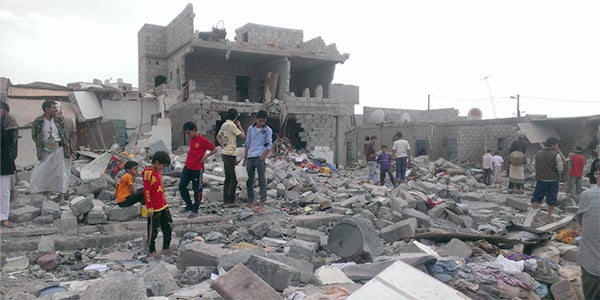
INTERNATIONAL NORMS TO PROTECT CIVILIANS ARE DIMINISHING WORLDWIDE
Since the end of World War II, the United States has played a leading role in establishing and enforcing norms related to the conduct of war and the protection of civilians. The U.S. was a major sponsor of the Geneva Conventions in the aftermath of World War II. Under Eleanor Roosevelt’s leadership, the U.S. pushed for passage of the Universal Declaration of Human Rights. But the latest actions from the U.S. and its allies are calling into question the country’s longstanding commitment to these norms. More disturbingly, U.S. behavior may be helping to precipitate a breakdown of these norms and fostering a “global protection crisis.”
In the UN Secretary General’s annual report on the protection of civilians in armed conflict, he noted that a preponderance of countries are flouting their obligations and “showing contempt for human life and dignity, often with impunity.” Pointing to examples ranging from Yemen and Nigeria to Somalia, South Sudan, and Syria, he observes:
[I]n many conflicts, parties flout their obligations and show contempt for human life and dignity, often with impunity. Civilians are routinely killed in direct and indiscriminate attacks. As conflict becomes increasingly urbanized, the impact on civilians reaches new lows, with bombs and rockets destroying schools, hospitals, markets and places of worship, while children are pulled from the rubble of their homes.
Other indicators are equally ominous. Civilian deaths and injuries from explosive weapons have increased by over 50% from 2011-2014. Likewise, in its annual conflict survey, the International Institute for Strategic Studies found that civilian fatalities from war remained at near-record levels, documenting 157,000 deaths in 2016, compared to 56,000 fatalities in 2008. The InterAction NGO alliance describes a “race to the bottom” where countries are internationally targeting civilians, indiscriminately using force during hostilities, rampantly disrespecting civilian protections, and showing “disregard for the most basic norms of humanity in war.” In fact, we may be witnessing a norm reversal – a process by which a “so-called internalized norm loses salience and becomes de-internalized.”
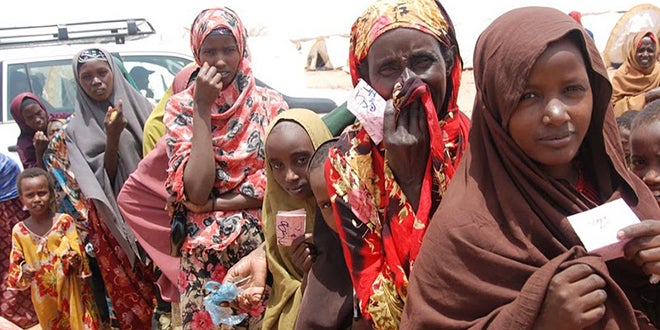
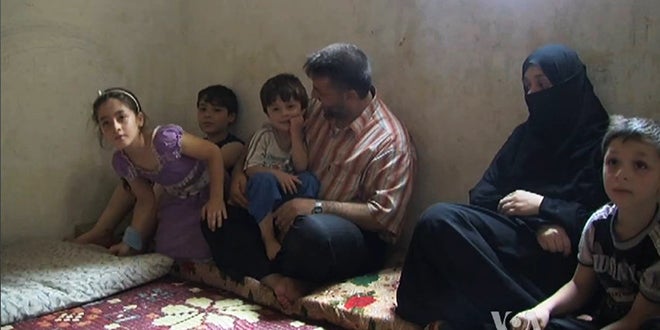
RECOMMENDATIONS FOR POLICYMAKERS
With civilians facing such an assortment of threats from conflict, the United States and other governments should consider taking several concrete steps in response.
First, while the U.S. military has set the standard for safeguarding civilian protection, there are enough worrisome trends when it comes to targeting oversight, selection of ordnance, and accountability that warrant some serious internal questioning about what seems to be going wrong. For example, given the heightened risks of civilian casualties in high-density urban areas, why is the U.S. military using bigger bombs that lack precision guidance? Under international law, the principle of proportionality prohibits states from launching attacks “which may be expected to cause incidental loss of civilian life, injury to civilians, damage to civilian objects, or a combination thereof, which would be excessive in relation to the concrete and direct military advantage anticipated.”
These are troubling questions that – at a minimum – warrant an internal review. Such a review would mirror a similar effort taken earlier in Afghanistan, where grave civilian harm concerns led to the commissioning of a series of studies and assessments. As Civilians In Conflict analyst Dan Mahanty relates, their findings “led to broad changes in how U.S. and its partner forces conducted operations. Civilian casualties dropped markedly over time after new commanders adapted operations to the study’s findings.” But there is no reason to rely solely on the Pentagon to assess its own conduct. Congress could just as easily establish a blue ribbon commission to investigate U.S. compliance with international humanitarian law and offer recommendations for improvements.
Even if the military considers undertaking a long-term civilian protection review, the Pentagon could take more immediate steps to mitigate civilian harm. Micah Zenko, for example, suggests that the Pentagon should incorporate “red teams” – which are teams of analysts outside the target development process who would independently assess the underlying intelligence and outcomes of proposed strikes. Red teams would serve as an autonomous check on commanders who may believe there is little risk of civilian casualties but who have overlooked a crucial intelligence gap.
Equally important, the military could bulk up its investigative capacity when allegations of civilian casualties occur. As U.S. commanders themselves admit, they rarely undertake site visits or interview victims in the course of a post-strike investigation. This has hindered the military’s ability to verify casualty allegations, and it also reduces accountability for poor decision-making. Finally, by purposely limiting its ability to learn from past mistakes, the military is turning a blind eye to important civilian protection lessons that ought to influence future operational decisions.
Second, the United States could be much more vigilant about holding partner forces accountable for violations of international humanitarian law. While existing law – particularly the Leahy Law – prohibits providing training and assistance to foreign military units that have committed gross violations of human rights, this ban does not extend to the transfer of arms. The Trump administration could easily rectify this loophole and make a policy decision not to sell arms to violators, such as the Saudis. If Trump does not want to act, Congress could take it upon itself to close this gap in law and send a clear message about its disapproval of arming foreign militaries that routinely and systematically harm civilians and violate the laws of war.
Finally, given the U.S.’s role in contributing to the global refugee crisis, raising the refugee cap above the Obama-era level of 110,000 seems appropriate. In contrast, Trump has proposed decreasing the cap to 45,000, which would be the lowest number any president has sought since the government first established refugee ceilings in 1980. Increasing refugee admissions above 110,000 would set an important precedent. It would be a symbolic admission that the U.S. bears a critical measure of responsibility for the global humanitarian crisis. It would also demonstrate to domestic audiences that fighting wars abroad has real consequences and force U.S. communities to wrestle directly with the implications of armed interventions.